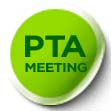Louisa Boren STEM K-8 Scholars:
- Grow 21st Century readiness in a community that values equity, sustainability, and the whole child.
- Develop rigorous STREAM skills to ask and answer audacious questions.
- Use Project Based Learning to tackle real world challenges.
1. Develop 21st Century readiness in a community that values equity, sustainability, and the whole child.
1.1 21st Century Learning: Within the context of core knowledge instruction, students must also learn the essential skills for succeeding in today’s world. A focus on communication, creativity, critical thinking, and collaboration is essential to prepare students for the future. We will cultivate lifelong scholars who love learning.
1,2 Equity/Cultural Competence: STEM K-8 will create classrooms that support success for students of all genders, races, and cultures. We believe culturally responsive teaching is built on motivation. Teachers and students work together to build motivation by enhancing inclusion, facilitating relevant learning, providing challenging learning experiences, and helping students see their effectiveness. We are committed to creating an environment that supports the recruitment and retention of girls and students from diverse backgrounds.
1.2.1 Motivational Equity framework
1.3 Environmental Sustainability: Education for Sustainability aspires to educate students who have the ability, ambition, and knowhow to make decisions that balance the need to preserve healthy ecosystems with the need to maintain vibrant economies and equitable social systems in this generation and in all generations to come. The linked Education for Sustainability Framework requires extensive discussion/exploration before adoption].
1,4 Positive Discipline uses democratic classrooms and practices that build mutual respect to help students solve problems and encourage positive behaviors.
1,5 Family involvement: STEM is built on the partnership between families, the PTA, and the school. Our community values volunteering, community events, communication, honors the contributions of families time, treasure and talent, and supports guardians as full partners in their children’s education.
2. Develop rigorous STREAM skills to ask and answer audacious questions.
2.1 The Next Generation Science and Engineering Standards provide guideposts for integrated curriculum. Students will learn to ask questions, plan and carry out investigations, and engage in using data.
2.2 Technology will be utilized by teachers and students to move from enhancing to transforming learning. The SAMR Model [Substitution, Augmentation, Modification, Redefinition] encourages technology use that creates innovative connections and new learning tasks.
2.3 Reading instruction utilizes Balanced Literacy practices to teach reading and writing skills, and integrate literacy into content areas and PBL projects.
2.4 Engineering curriculum will teach students to define problems, develop and test models, and design solutions.
2.5 Arts education will develop creativity, risk taking, and communication skills. Students will explore scientific illustration, technical drawings, construct models, and participate in visual and performing arts integrated into PBL and science and engineering tasks.
2.6 Math curriculum rooted in the Common Core Standards, along with math instructional practices emphasizing differentiation and rigor, will be used K-8 to challenge students at different performance levels and prepare all students to take advanced mathematics courses.
3. Use Project Based Learning to tackle real world challenges.
3.1 STEM K-8 students participate in big and small learning projects that explore real world problems and challenges. Project Based Learning experiences are based on inquiry and rigorous standards, integrate curriculum, and produce public displays of collaborative work. Students must communicate their learning to others. PBL will nurture lifelong scholars who love learning.
3.2 Community Partnerships: Learning takes place inside the school and out, in cooperation with community, business and higher education partners.
3.2.1 Partnerships provide human talent, facilities, technology and other resources necessary to prepare students for the ever-changing world of work and education. Louisa Boren STEM K-8 will seek to partner with organizations that recognize the value of inspiring and preparing all students to follow a STEM education and career pathways that will fill the critical gaps in the STEM workforce. Throughout all grades we will work to develop opportunities for students to explore career and educational options, including visits by STEM professionals and tours of regional STEM industries.

